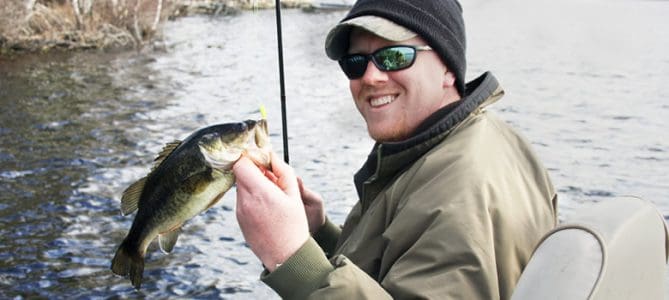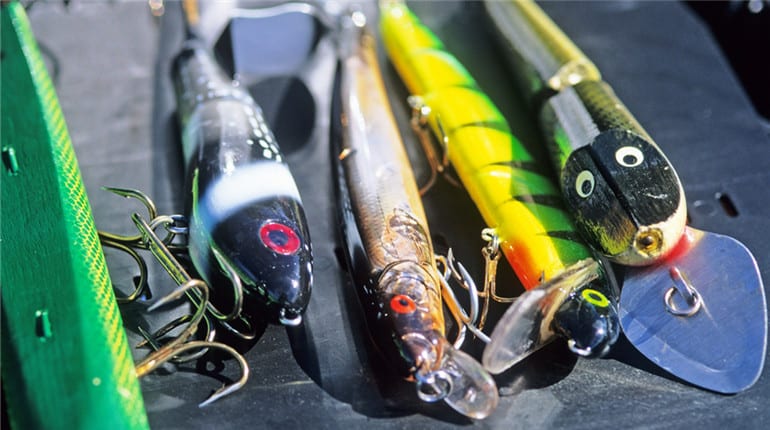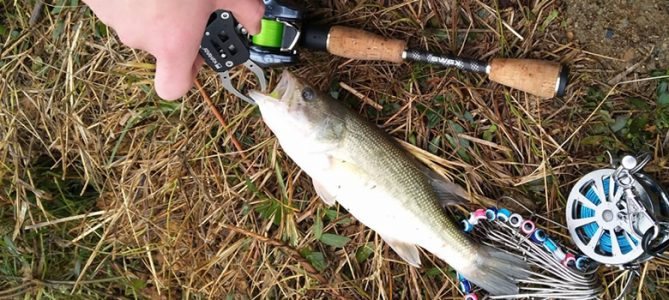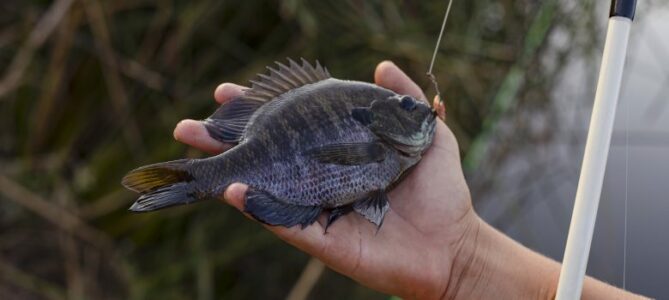If you buy via a link on this page, we may receive a commission, at no extra cost to you.Learn more
There is nothing more versatile than luring with soft plastic worms when it comes to fishing for bass. You can find these rubber worms in different sizes, colors, and shapes. The choices are great, but they can be quite overwhelming especially if it is your first time to use these lures. Add to that the different number of ways for rigging these worms, along with the endless selections for planning your attack on unsuspicious bass.
It can be difficult for a beginner like you, but I have the perfect guide for you so you can use these worms to target your next catch successfully.
Choosing the Best Plastic Worms for Bass
One of the first steps to using these worms as bait for bass fishing is to decide on the color and size. Yes, it may seem unnecessary for beginners, but the type you go for will help you fish without problems. Here are some tips when choosing the worms:
Fishing in clear, open water: It is best to go for worms that are small in size, usually about three to four inches. Bass will quickly see your lure, so you do not have to draw too much attention for the worm you selected. Plus, you reduce the risk of scaring the fish off.
Fishing around an area with covers: Some examples are where there are grass beds, around grassy shores, and laydowns where there are grass and branches. In this case, you will need more visible bait with at least five inches in size.
Season: You should also take into account the current season, which means you should offer something that bass are typically accustomed to during that time. The season has an effect on the temperature of the water, which is something that you should also consider.
Color: When it comes to the color, you have several factors to think about. Generally, the rule is to use natural colors when fishing in clearer waters. If the water is murky and dirty, you should choose brighter worms, so they are more visible for the fish to see.
You have plenty of color options to go for, but the most effective ones are:
Black with blue flecks
Green pumpkin
Watermelon red
Aside from the size and color, you also have to select the shape and style of the worm carefully. Each one has an advantage depending on the situation. It is difficult to give you what will truly work best for a specific circumstance, but I can help simplify these styles so you can have an idea when you should use them:
Worms with curly tails: This style, which includes ribbon, gator tail, and U-tail, works best in dark waters and areas with lots of covers, such as grass. These worms present more action and vibration, which can be useful when fishing in the mentioned situation.
Straight tail: These worms are quite common and probably the favorite of many people. They are more straightforward than other lures, and you can present them to the fish in different ways. The trick, finesse, and stick bait worms are the most popular types, which are all effective for a more subtle presentation.
How to Rig Plastic Worms
The next step now is to set up your fishing with the worms. You will find that there are several ways to rig your worm because of the varieties of the lure. However, there are three methods to rig the soft worms, which are called Carolina, Texas, and drop shot.
The Carolina Rig
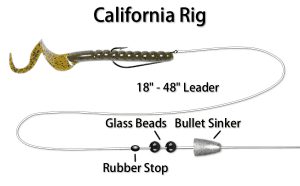
In this type of rig, you will separate the separate the worm from the weight, which causes the plastic to be in a more natural angle. Pulling the weight will make the worm dance and dash for a moment behind the weight.
Tying the rig needs you to slide the egg sinker or the bullet onto the line. After that, you will have to push a brass clacker or bead behind the weight. Hold it in place as you attach a barrel swivel at the line’s end. Then, take a leader, which can be anywhere from two to five feet and tie it to the base of the barrel swivel. Attach a hook at the end of the leader and thread the plastic onto the hook in which you can use the Texas style.
Read more about The Carolina Rig
The Texas Rig
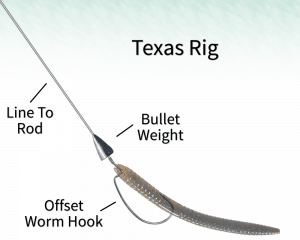
Many anglers use this rig, especially beginners looking for a simple setup. It works in rocks, brush, grass, and even human-made structures, making this rig a better choice than Carolina in these situations.
Start by penetrating the hook point into the worm. Poke it out of the worm after you push it in about ¼ of an inch at a 90-degree angle. Go around the whole hook until you find the eyelet where you will rotate the hook, so it points back toward the worm. Lay the hook to the worm’s side but ensure the worm is straight.
Read more about The Texas Rig
Drop Shot
This rig setup is useful for fishing vertically. Start with a standard knot attached to the hook, but there should at least be six inches at the tag end. After tying the knot, get the tag end and move it around the eyelet to have the hook pointing upward. Use the Texas rig when hooking the worm. You can also nose-hook the worm over the point.
You can link a bell sinker, or a drop shot weight at the bottom of the tag end. This method is quite useful when fishing around brush piles and standing timber, especially if you go for a small 1/0 or No. 1 worm hook that you will Texas rig as well.
Read more about the best lures for drop shot fishing.
Plastic Worm Gear Essentials
Before you start fishing, there are significant pieces of equipment you need to be ready to catch some bass:
Rod and Reel: First-time anglers should keep it simple so look for a combo that you can utilize for both lure and bait fishing. A rod rated for eight to 20-pound line is a good start. Spinning reels are also a good choice before going for baitcasting reels.
Related: Best Bass Fishing Reels
Line: Large-diameter lines are more durable than smaller ones even though they have the same material. However, it is best to start with monofilament lines, which are strong and buoyant.
Tackle: Three different tackle types are important for anglers, which are hooks, floats, and weights. For hooks, stick with ones that are not snelled, which means they do not have a leader tied to them beforehand. Floats or bobbers will keep your bait off the bottom of the water, and you can choose what you like. For weights, go for split shot ones, which are affordable and easy to install.
How to Catch Bass with Plastic Worms
With everything ready to go, the final step is to fish with the worms. I have tried and tested some ways, including pitching the lure to the target area, which works in areas with grass and other covers. Hit all the sides and angles, then keep tossing and retrieving until you catch the bass.
Meanwhile, if you plan to fish in open areas or those with sparse structures, including points or humps, I find that casting out and bouncing it back works wonderfully. You can change the speed of the bounce up until you figure out what is getting the fish to bite the worm. Shaking the bait a little can get the bass to respond faster.
If you are using the Carolina rig, casting and dragging will normally work. You can also use your sinker when you use this method, which can help you feel the difference in the lake bottom with your fishing rod.


